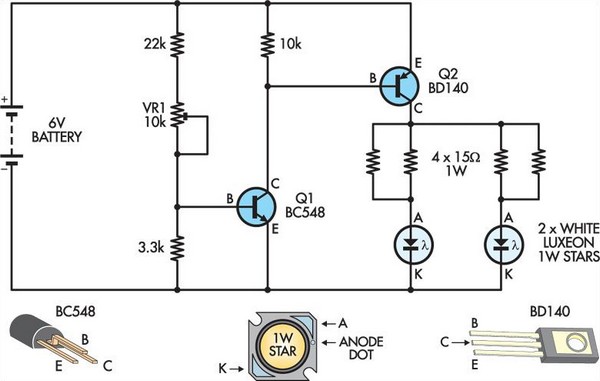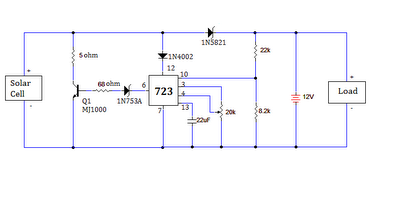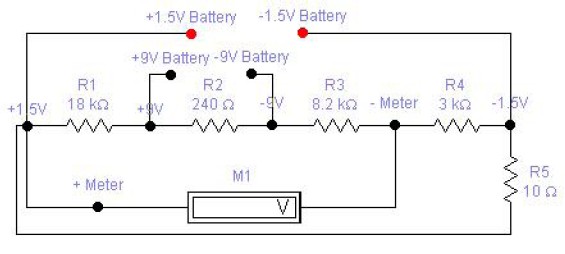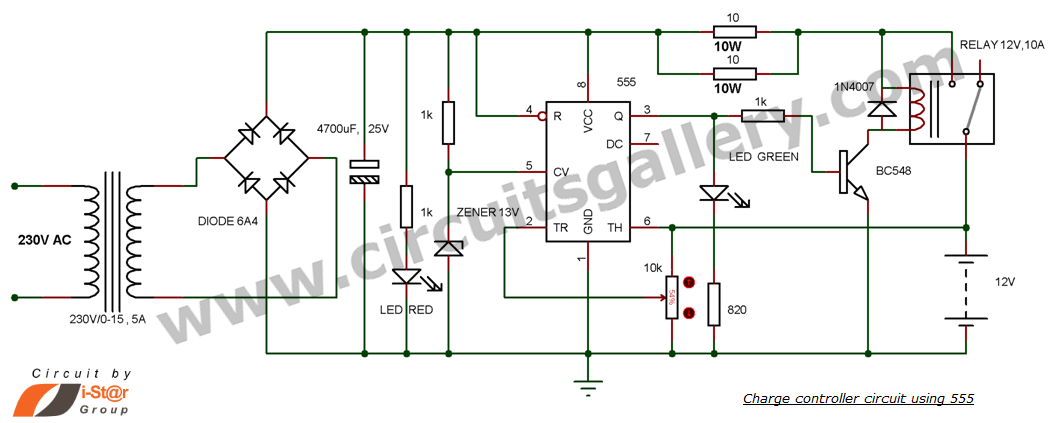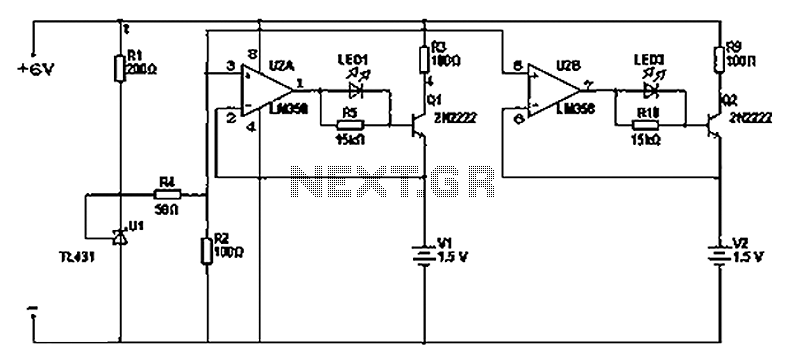
NiCd battery ChargerCircuit With TLC555 IC

The following circuit illustrates a portable NiCd battery charger circuit diagram. The portable battery charger is designed to facilitate the charging of nickel-cadmium batteries.
The portable NiCd battery charger circuit typically consists of several key components, including a transformer, rectifier, voltage regulator, and charging indicator. The transformer steps down the AC voltage from the mains supply to a lower AC voltage suitable for charging the battery.
The rectifier, often implemented with diodes, converts the AC voltage into pulsating DC voltage. This pulsating DC is then smoothed out using capacitors to provide a more stable DC output. A voltage regulator is employed to ensure that the output voltage remains constant, preventing overcharging which could damage the battery.
The charging process is monitored using an LED indicator, which lights up to indicate that the charging is in progress. The circuit may also include a resistor to limit the current flowing into the battery, thus protecting it from excessive charging current.
In addition to these components, the circuit may feature a switch to allow the user to turn the charger on or off as needed. Safety features such as thermal fuses or cutoff circuits can also be integrated to enhance the reliability of the charger, ensuring that it operates within safe temperature limits.
Overall, this portable NiCd battery charger circuit provides a practical solution for charging batteries in various applications, making it an essential tool for users of portable electronic devices.The following circuit shows a Portable NiCd battery charger ciecuit diagram. The portable batteries charger used to provide an opportunity to load .. 🔗 External reference
The portable NiCd battery charger circuit typically consists of several key components, including a transformer, rectifier, voltage regulator, and charging indicator. The transformer steps down the AC voltage from the mains supply to a lower AC voltage suitable for charging the battery.
The rectifier, often implemented with diodes, converts the AC voltage into pulsating DC voltage. This pulsating DC is then smoothed out using capacitors to provide a more stable DC output. A voltage regulator is employed to ensure that the output voltage remains constant, preventing overcharging which could damage the battery.
The charging process is monitored using an LED indicator, which lights up to indicate that the charging is in progress. The circuit may also include a resistor to limit the current flowing into the battery, thus protecting it from excessive charging current.
In addition to these components, the circuit may feature a switch to allow the user to turn the charger on or off as needed. Safety features such as thermal fuses or cutoff circuits can also be integrated to enhance the reliability of the charger, ensuring that it operates within safe temperature limits.
Overall, this portable NiCd battery charger circuit provides a practical solution for charging batteries in various applications, making it an essential tool for users of portable electronic devices.The following circuit shows a Portable NiCd battery charger ciecuit diagram. The portable batteries charger used to provide an opportunity to load .. 🔗 External reference
